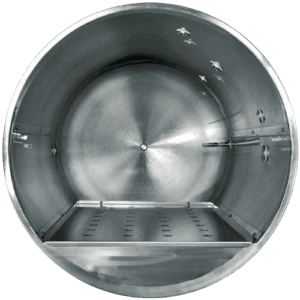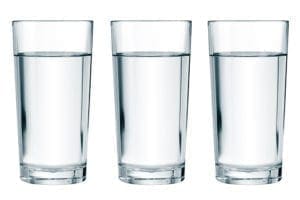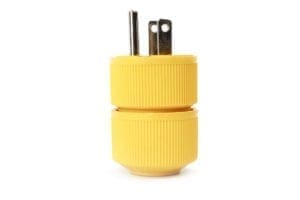Autoclave Energy Consumption & Water Requirements
Steam Sterilization Energy & Water Efficiency
Most researchers and lab technicians view the downsides of autoclave usage as unavoidable laboratory realities: Autoclaves are costly, finicky, run up high utility bills, and break down often.
 But this doesn’t have to be the case. The steam-jacketed autoclaves used in most non-medical facilities are finicky, waste water, and run up huge power bills. But that’s because they’ve been optimized for medical applications, which generally demand extremely high throughput and short cycle times, at the cost of durability, reliability, and efficiency. If you aren’t processing flat trays of medical instruments all day, every day, then you don’t need a jacketed autoclave—and you don’t want one.
But this doesn’t have to be the case. The steam-jacketed autoclaves used in most non-medical facilities are finicky, waste water, and run up huge power bills. But that’s because they’ve been optimized for medical applications, which generally demand extremely high throughput and short cycle times, at the cost of durability, reliability, and efficiency. If you aren’t processing flat trays of medical instruments all day, every day, then you don’t need a jacketed autoclave—and you don’t want one.
In general, switching to a non-jacketed autoclave will greatly reduce any lab’s environmental impact through lower energy use and water consumption. Non-jacketed autoclaves use about 1/6th to 1/10th as much water and energy as comparable jacketed models. Additionally, a non-jacketed autoclave has a significantly lower initial purchase price, with much lower ongoing maintenance costs.
How Does a Steam-Jacketed Autoclave Function?
Every autoclave uses heat to sterilize loads by flooding a sealed pressure chamber with steam and holding the load at a specific temperature for a given period of time. This combination of moist heat, sustained high temperature, increased chamber pressure, and time consistently kills bacteria and other microorganisms, deactivates spores and viruses, disinfects pathogenic waste, and sterilizes culture media, pipette tips, glassware, surgical instruments, and the like.

Many modern steam sterilizers—especially larger models—rely on a “jacketed” design to speed up this process. These units require an independent steam generator. That steam is first routed through the “steam jacket,” which is a rectangular steel shell surrounding the rectangular pressure chamber. The steam then enters the sealed chamber. This nested arrangement makes it possible to reach the sterilization temperature relatively quickly. At the end of the sterilization cycle, the jacket can then be flooded with cold water to likewise speed cooling.
Jacketed autoclaves require an enormous amount of water under normal operating conditions. This is in large part due to the use of constant flow “bleeder valves” for cooling waste outflow. That’s vital when the steam sterilizer is constantly running back-to-back cycles. But it is entirely uncalled for in almost every research, training, or industrial lab, where on average just one to three cycles are run each day. For example, in 2015 the University of California-Riverside began
automated utility usage tracking on two of their 37 jacketed autoclaves. They found that these steam sterilizers consumed a total of 654 gallons of water each day, with no correlation between how many cycles were run and how much water was consumed. During one notable 39 day period, that pair of autoclaves used almost 16,000 gallons of water, even though not a single cycle was run on either of them.
The Hidden Cost of Steam-Jacketed Autoclaves: High Water Consumption
The University of Alabama-Birmingham houses hundreds of labs in its 10 schools and 24 research centers, most of which use steam-jacketed autoclaves. In fall 2023 UAB conducted an in-depth study to determine the environmental and monetary costs of using jacketed steam sterilizers in their labs. They found that, on average, their jacketed autoclaves used between 44 and 50 gallons of water per cycle. Meanwhile, similarly sized and tasked non-jacketed autoclaves used less than 2 gallons per cycle.

Based on these findings, UAB analysts estimated the cost of water to operate their jacketed autoclaves at about $764 per autoclave per year, while water costs for the non-jacketed autoclaves were only about $23 per autoclave per year.
Given that UAB owns and operates more than 100 steam jacketed autoclaves on campus, using steam-jacketed autoclaves costs an additional $74,000 per year—with no corresponding benefit.
 This is by no means a new problem, nor one limited to a single organization. During a 2008 audit, Stanford University analyzed 60 jacketed autoclaves owned and operated by its Santa Clara County campus research facilities. Although researchers only used these autoclaves during normal business hours, the machines were consuming more than 93,000 gallons of water per day—or 3 percent of the university’s entire daily water ration (as set by its General Use Permit from the county). In a 2016 autoclave audit, the University of California-Riverside (UCR) found similar levels of water waste.
This is by no means a new problem, nor one limited to a single organization. During a 2008 audit, Stanford University analyzed 60 jacketed autoclaves owned and operated by its Santa Clara County campus research facilities. Although researchers only used these autoclaves during normal business hours, the machines were consuming more than 93,000 gallons of water per day—or 3 percent of the university’s entire daily water ration (as set by its General Use Permit from the county). In a 2016 autoclave audit, the University of California-Riverside (UCR) found similar levels of water waste.
Compare this water consumption to Priorclave North America’s non-jacketed autoclaves. A comparable Priorclave autoclave installed alongside UCR’s existing jacketed units used just four gallons of water per cycle, and used no water while sitting idle. (For a full explanation as to how and why non-jacketed autoclaves drastically outperform jacketed autoclaves in research labs, download our full “Autoclave Water Requirements and Consumption” whitepaper.)
Non-Jacketed Autoclaves: Higher Energy Efficiency, Smaller Carbon Footprint
 While clean water is a major issue, it’s far from the biggest issue. Most labs and manufacturers rightfully worry about their energy consumption, and its effect on their carbon footprint. An increasing number of labs and research institutions take the lead in decarbonization and sustainability efforts within their organizations. This increases the pressure to “right-size” your steam sterilizers.
While clean water is a major issue, it’s far from the biggest issue. Most labs and manufacturers rightfully worry about their energy consumption, and its effect on their carbon footprint. An increasing number of labs and research institutions take the lead in decarbonization and sustainability efforts within their organizations. This increases the pressure to “right-size” your steam sterilizers.
Most jacketed autoclaves are still “idle hot”: in order to maintain shorter cycle times, they maintain a head of steam even when no cycle is being run. As part of the 2016 UCR audit, analysts also tracked energy consumption. Here there was a much stronger correlation between the number of cycles run and autoclave energy consumption. Their existing jacketed autoclaves varied from 11 Kwh/day (when the units sat idle) to 222 kWh/day (during high-usage periods). On average, their jacketed autoclaves used around 84 kWh/day. By comparison, UCR’s non-jacketed Priorclave autoclave—which produces steam exclusively on demand—averaged just 15 kWh/day. (For details on how chamber shape drives autoclave power consumption, please download our full “Autoclave Energy Consumption” whitepaper.)
Given their high demand for steam, many facilities choose to run their jacketed autoclaves off of house steam supplies. This steam is almost invariably generated by burning natural gas, resulting in carbon emissions of about 2.4 pounds of CO2 per sterilization cycle.
Meanwhile, the in-chamber steam generation of non-jacketed autoclaves relies on electrical heaters, which can easily be powered by low-carbon or zero-carbon sources. Among Priorclave’s most popular models is the EH320. This is a 320-liter non-jacketed steam sterilizer. Presuming it replaces a comparably sized jacketed autoclave in a normal research lab, it will save that lab around 86,000 gallons of water and 18,200 kWh of electricity.


